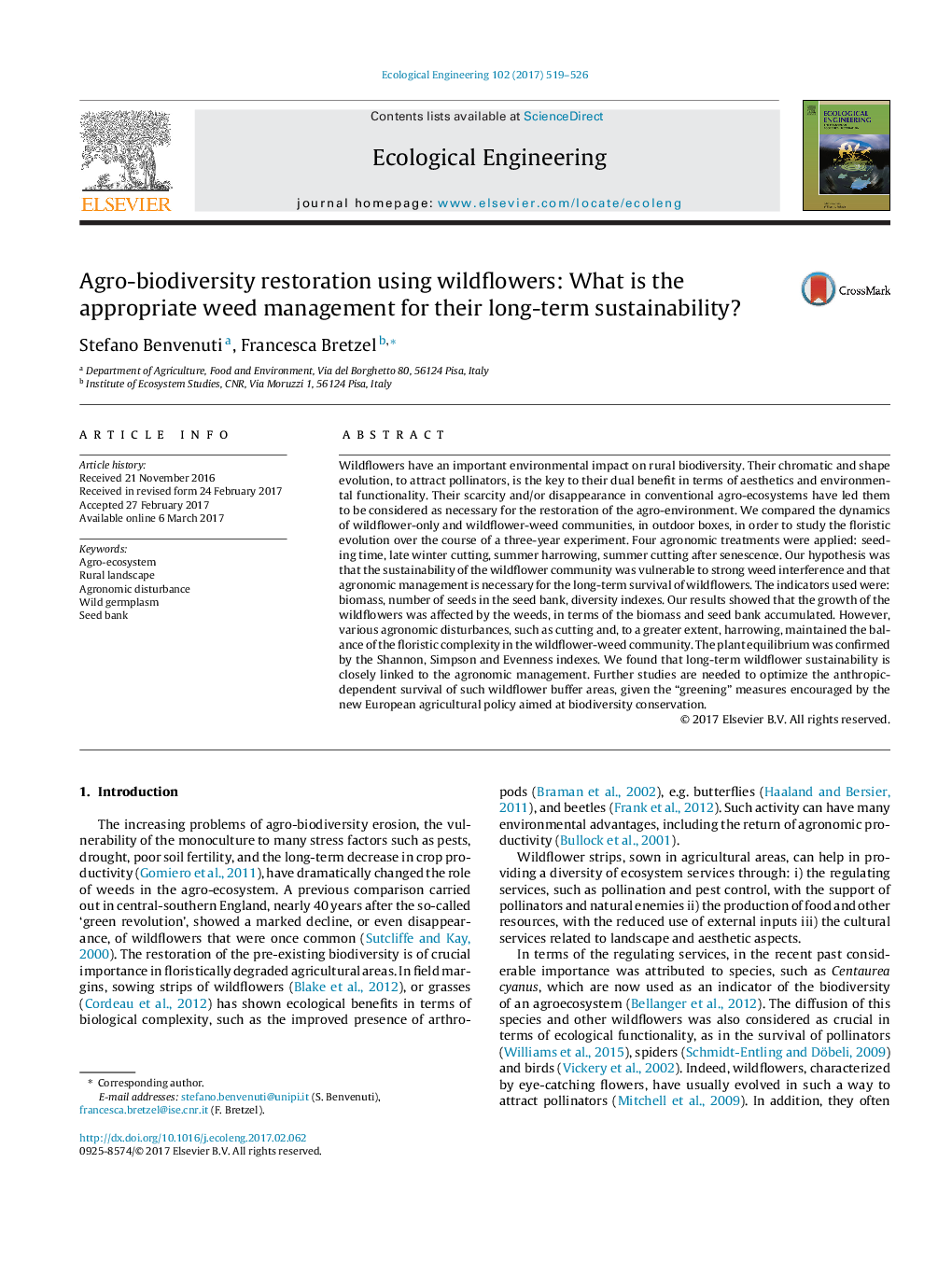| Article ID | Journal | Published Year | Pages | File Type |
|---|---|---|---|---|
| 5743797 | Ecological Engineering | 2017 | 8 Pages |
Wildflowers have an important environmental impact on rural biodiversity. Their chromatic and shape evolution, to attract pollinators, is the key to their dual benefit in terms of aesthetics and environmental functionality. Their scarcity and/or disappearance in conventional agro-ecosystems have led them to be considered as necessary for the restoration of the agro-environment. We compared the dynamics of wildflower-only and wildflower-weed communities, in outdoor boxes, in order to study the floristic evolution over the course of a three-year experiment. Four agronomic treatments were applied: seeding time, late winter cutting, summer harrowing, summer cutting after senescence. Our hypothesis was that the sustainability of the wildflower community was vulnerable to strong weed interference and that agronomic management is necessary for the long-term survival of wildflowers. The indicators used were: biomass, number of seeds in the seed bank, diversity indexes. Our results showed that the growth of the wildflowers was affected by the weeds, in terms of the biomass and seed bank accumulated. However, various agronomic disturbances, such as cutting and, to a greater extent, harrowing, maintained the balance of the floristic complexity in the wildflower-weed community. The plant equilibrium was confirmed by the Shannon, Simpson and Evenness indexes. We found that long-term wildflower sustainability is closely linked to the agronomic management. Further studies are needed to optimize the anthropic-dependent survival of such wildflower buffer areas, given the “greening” measures encouraged by the new European agricultural policy aimed at biodiversity conservation.
